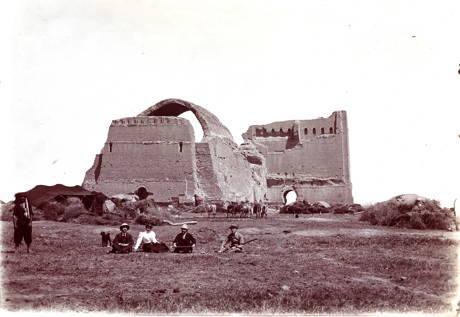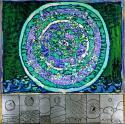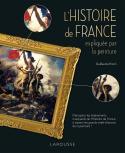Art Of The Day Weekly
#449 - from 17 November 2016 to 23 November 2016

Taq Kasra, view of façade and arch hall from the west, Ctesiphon / Iraq, 1928-1931? © Ktesiphon Archive / Museum of Islamic Art / Berlin State Museums. Photo: unknown.
IN THE AIR
This is how civilisations die
BERLIN – With such coincidences as the Brexit and the election of Donald Trump, we have the feeling of being at a crossroads of History. But we also have the unpleasant impression that the course of History can change directions in a question of minutes. Certain exhibitions can embody those thoughts unexpectedly. It seems to be the case of the one at the Pergamon Museum in Berlin, dedicated to the Sassanid Empire. Most of us don’t know where this civilization of the high plateau in Iran can be placed in time and in space. Yet it was able to hold its own and challenge the Byzantium Empire for four centuries, controlled a territory as large as the current United States and was capable of stealing the Real Cross from Jerusalem! All that is left are grand ruins, tombs dug out in the cliffs, underground aqueducts and the magnificent palace on the banks of the Tigre, in the former capital of Ctesiphon. The exhibition also shows how easily people forget and how quickly destiny can change directions. In this case, it took a crisis in the dynasty in the middle of the VIIth century - the equivalent of a political crisis today – and the ambition of neighboring nations to wipe off from the face of the earth - and in just a few years - an order that seemed eternal. Analogies are always risky, but there is nothing wrong in cultivating them while admiring these embossed silver cups, these delicate cameos and these silk clothes which the Sassanid civilization exported from China to the Western world, good apostles of a globalization that existed before our time.
• The Heritage of the Old Kings. Ctesiphon and the Persian Sources of Islamic Art at Pergamonmuseum, from 15 November 2016 to 2 April 2017
EXHIBITIONS

Alechinsky, Astre et désastre, 1969, acrylic on paper with ink predella on paper transferred on canvas, 155 x 155 cm. Private Collection. Courtesy galerie Lelong. Photo D.R © ADAGP. Paris, 2016.
Alechinsky hosted by Matisse
LE CATEAU-CAMBRÉSIS – In our increasingly digital world, venerated yet dynamic Pierre Alechinsky (born in 1927) demonstrates his deep-rooted attachment to books. He creates dozens of them with the most honored poets and writers, whether alive or dead (Balzac, Michaux, Cendrars, Joyce Mansour, Gérard Macé). In the museum dedicated to Matisse on his own grounds, the relationship with the master of modern art can be seen in a shared taste for the written word, for reading, for calligraphy and the matching gesture, and decorative and typographic exuberance. They both dealt with the same theme over a one century span (1896 and 1996), the needle shaped rocks - les aiguilles – at Belle-Ile-en-Mer, in Brittany. The exhibition is full of small objects such as books or stamps for engraving and also shows huge formats in bright colors, the famous Marginalia. In it a central motif is surrounded by friezes in the shape of a cartoon strip, distant descendants of the Renaissance predella.
• Alechinsky, Marginalia at the musée Matisse, from 5 November 2016 to 12 March 2017
Picasso and Romanesque art
BARCELONA – The exhibition explores the relationship between Picasso and Romanesque art, supported by two key dates: 1906 and his stay in Gosol; 1934 and his visit to the national museum of Catalonia, where the current exhibition is held. It gives a particular slant to the theme of the crucifixion. At Museu Nacional de Catalunya, from 17 November 2016 to 26 February 2017.

Paul Klee, The Gaze of Ahriman, 1920, watercolour and gouache on cardboard, 12,5 x 20,5 cm, private collection.
Klee and his Surrealist friends
BERNE – As independent as he was, Paul Klee followed the artistic movements of his time very closely, and in particular the Surrealist one. Indeed, he rubbed shoulders with the main actors of the movement in Paris, at the beginning of the 1920s. His works here are placed face to face with those of his contemporaries, such as de Chirico, Ernst and Miró. At Zentrum Paul Klee, from 18 November 2016 to 12 March 2017.
Ligabue, a tragic primitive artist
ROME – Half way between Expressionism and art brut, Antonio Ligabue (1899-1965) had a tormented career, interrupted by periods in the insane asylum. He was assimilated to primitive artists, he invented lush natural environments, full of ferocious beasts, and sometimes included a motorcycle, his passion in his later years. At the Vittoriano, from 11 November 2016 to 8 January 2017.
Tancredi, another dripping
VENICE – With Jackson Pollock he was the only artist Peggy Guggenheim had a contract with. In spite of a life (1926-1964) that was even shorter than that of his American alter ego (1912-1956), Tancredi Parmeggiani was able to develop a rich work in the informal galaxy. At Collezione Peggy Guggenheim, from 12 November 2016 to 13 March 2017.
BOOKS
History in a painting
How do Populist candidates, with mind boggling programs – of which they hardly apply any elements to their personal itinerary – manage to enrapture the public? Why do nations, tired of the status quo, decide to throw themselves into the unknown like into a smokescreen? As often noted before, History is peopled by examples we could learn a lot from. But unless it is taught by the stars on the TV screen, History is no longer fashionable nor does it interest anyone. Some ten years ago a survey in the Daily Telegraph showed how one out of ten children thought Hitler was the trainer of the national German football team. The situation has surely not gotten any better. In this case certain vademecum are more than welcome, such as this book which deciphers paintings from the history of art. One can be interested in the crowned heads, and study the entrance of Charles VIII into Naples by Féron or battles and sieges, like the one of La Rochelle in 1627-28 by Motte. Or choose diplomacy with the reception of the ambassadors to Siam by Gérôme. This will help us see visible transformations – and the substantive issues that never change. Or one can follow a current tendency and analyze the way the right to vote and enthronements evolved, and note that progress sometimes gives strange results. What did the deputies ask for at the Jeu de paume on 20 June 1789? What luxury surrounded the Coronation of Napoleon on 2 December 1804? What was the role of Lamartine in favor of universal suffrage on the steps of the Hôtel de Ville on 25 February 1848? A good painting is sometimes worth a thousand words.
• L’Histoire de France expliquée par la peinture, by Guillaume Picon, Larousse, 2016, 224 p., €25.
OPENINGS OF THE WEEK

Annabelle ARLIE
17 November 2016 - PARIS - Galerie Derouillon
A young artist who recycles in a conceptual way the infinite resources of internet
IN BRIEF
PARIS - The Van Gogh museum of Amsterdam does not believe the 65 drawings attributed to Van Gogh, found in one same notebook and published by the publishing house le Seuil on 17 November are authentic.
TOURCOING - The IMA (Institute of the Arab world) will open a regional annex in Tourcoing on 17 November 2016.

